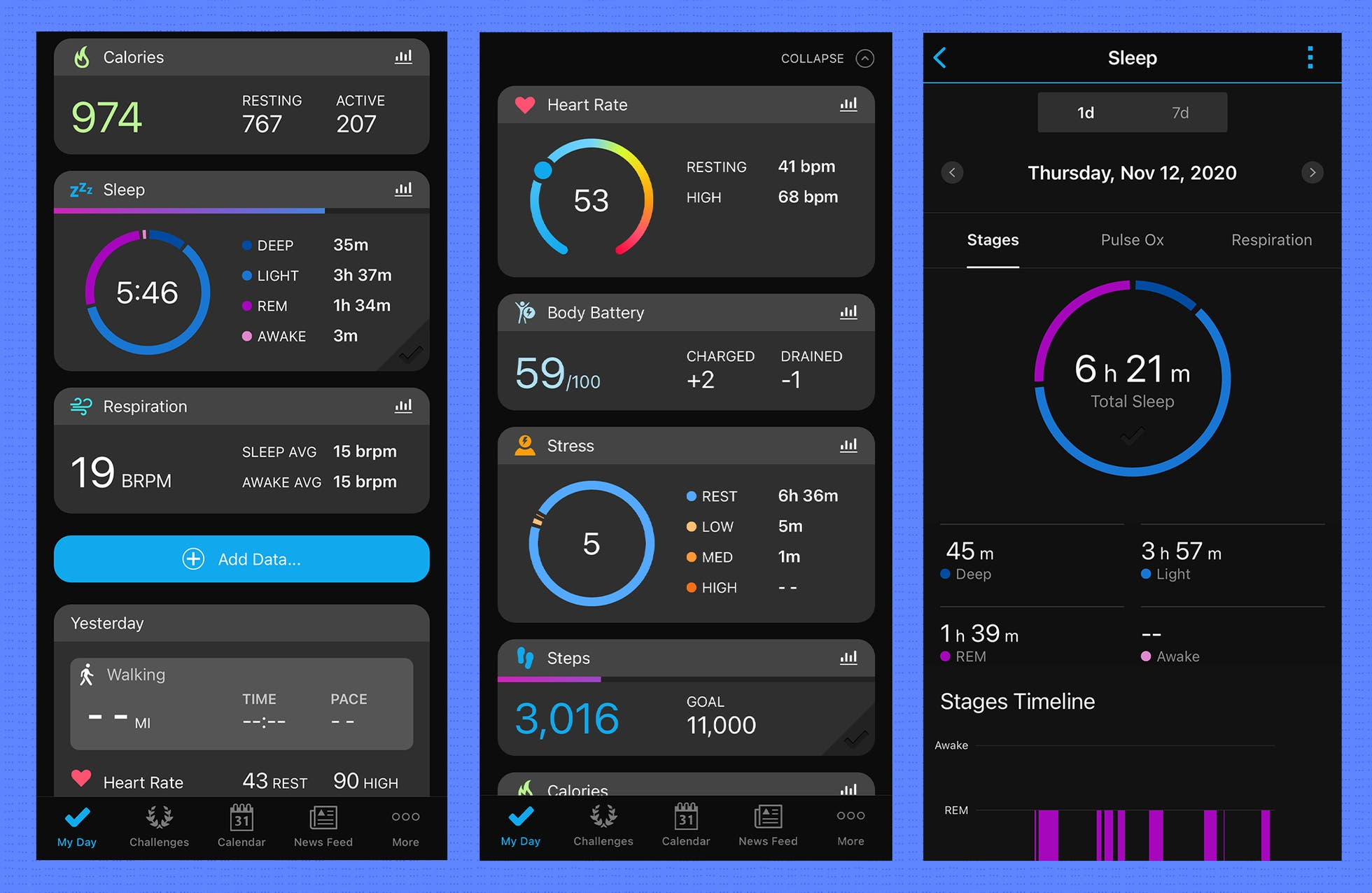Health tracking is becoming an essential part of modern wellness, fundamentally transforming how we approach learning and memory formation. Recent advancements in neuroscience research have unveiled groundbreaking techniques aimed at decoding the intricate processes underlying these cognitive functions. By understanding the molecular and synaptic changes in the brain, particularly in relation to neurological disorders like dementia, researchers are paving the way for innovative treatments. This detailed exploration into synaptic plasticity not only sheds light on memory retention but also enhances our approach towards dementia treatment. The implications of health tracking in this context could lead to a profound understanding of the brain’s adaptability and its capacity for recovery.
Health monitoring, often referred to as health tracking, represents a crucial aspect of personal wellness management, particularly concerning cognitive health. Terms like cognitive performance evaluation and memory assessment are gaining traction as researchers delve into the complexities of learning processes and neurological challenges. Investigating the neuronal connections that underpin memory formation offers valuable insights into potential therapies for conditions such as Alzheimer’s. As advancements in neural imaging techniques improve our capacity to gauge synaptic activity, the link between health tracking and effective dementia interventions becomes increasingly clear. Embracing these methodologies not only enhances our comprehension of the brain but also equips us with the tools necessary to foster better health outcomes.
The Role of Synaptic Plasticity in Memory Formation
Synaptic plasticity is a fundamental mechanism underlying how we learn and form memories. It refers to the ability of synapses, the junctions between neurons, to strengthen or weaken over time based on activity levels. This adaptability allows our brain to reorganize itself in response to new information, forming a neural basis for learning. By studying synaptic plasticity at a molecular level, researchers can gain insight into how memories are encoded and retained in neural circuits. For instance, the technique developed by Harvard researchers, EPSILON, highlights that specific proteins like AMPARs are crucial in enabling these synaptic changes that facilitate memory.
Furthermore, the implications of understanding synaptic plasticity extend beyond mere memory formation. This knowledge can also shed light on various neurological disorders, where synaptic transmission may be disrupted. For individuals suffering from dementia and other cognitive impairments, exploring how synaptic connections decay over time offers potential avenues for treatment. With methods such as EPSILON paving the way for real-time observations of synaptic dynamics, scientists can begin to unravel the complex interplay between neurotransmitters and receptor sites essential for memory retention.
Health Tracking: Monitoring Memory Formation Mechanisms
Health tracking plays a pivotal role in understanding memory formation, particularly through the lens of neuroscience research. By monitoring the synaptic changes and dynamics as memories are formed, researchers can offer deeper insights into how our brains process and store information. The EPSILON technique exemplifies this by allowing scientists to visualize protein movements within neurons with unprecedented precision. Such detailed observations can lead to breakthroughs in monitoring cognitive health, paving the way for timely interventions in the treatment of memory-related disorders.
As the field of neuroscience continues to develop, the importance of health tracking in cognitive functions cannot be overstated. By leveraging advanced tracking methods to study synaptic plasticity, researchers can not only chart memory formation but also identify early markers of cognitive decline. This proactive approach enables healthcare professionals to design personalized treatment plans and potentially mitigate the effects of conditions like Alzheimer’s disease. In an age where understanding memory function is increasingly tied to health outcomes, rigorous monitoring of these processes will be central in enhancing therapies aimed at neurological disorders.
Innovative Techniques in Neuroscience Research
The evolving landscape of neuroscience research is characterized by innovative techniques that challenge our previous understanding of brain function. Techniques like EPSILON are revolutionizing how we visualize and study synapses, allowing for explorations of memory formation that were once thought unattainable. This novel approach not only enhances our knowledge of synaptic behavior during learning but also opens doors to multiple avenues of inquiry into neurological conditions affecting memory, such as dementia or Alzheimer’s.
These innovations are crucial in mapping the intricate web of neural connections that underpin our cognitive abilities. By obtaining data with high-resolution imaging of synaptic plasticity, researchers can begin to correlate specific synaptic changes with cognitive events and the progression of neurological disorders. Such a detailed understanding is essential for developing targeted therapies aimed at reversing cognitive decline, enhancing our ability to treat patients effectively. The future of neuroscience lies in harnessing these advanced techniques to unlock the mysteries of the brain, ultimately fostering breakthroughs in understanding and treating complex neurological disorders.
Insights into Dementia Treatment through Memory Mapping
The recent developments in memory mapping techniques bring promising insights into potential treatments for dementia. By delving into the molecular mechanisms of memory formation, particularly through the study of synaptic plasticity, researchers can identify the points of failure in neurons that lead to cognitive decline. Studies utilizing the EPSILON technique have started to reveal how the movement and availability of AMPAR proteins correlate with synaptic strength and, consequently, memory retention. These insights are crucial in designing targeted therapeutic approaches for dementia patients.
Moreover, understanding how synaptic alterations correspond to memory loss enables scientists to develop diagnostic tools that can detect early signs of dementia. By tracking changes in synaptic plasticity over time, caregivers and healthcare professionals might better predict and monitor the progression of the disease. The potential for new, targeted therapies to enhance synaptic function or restore it in neurodegenerative contexts excites researchers, making dialogue and collaboration between scientists and clinicians ever more vital in the continuous battle against dementia.
The Future of Cognitive Function Research
As the relevance of cognitive function research grows, the potential applications of groundbreaking techniques like EPSILON become increasingly evident. By allowing a clear view of synaptic interactions and memory formation mechanisms, this method provides a pathway for understanding how our brains adapt and learn. Looking ahead, these discoveries could yield not only better treatment methodologies for neurological disorders but also strategies for cognitive enhancement in healthy individuals. This dual focus on both treatment and enhancement underscores the profound implications of this research on societal health.
Researchers are optimistic about expanding the application of their findings to include studies of various types of memories that exhibit different patterns of synaptic plasticity. This could lead to a comprehensive understanding of how different memories are formed and may expose vulnerabilities that lead to cognitive decline. As more labs adopt these innovative tools, the prospect of collaborative, interdisciplinary research in neuroscience becomes more tangible. This future embraces the challenge of enhancing our understanding of cognitive processes, ultimately striving to improve health outcomes for countless individuals worldwide.
The Intersection of Basic Science and Health Innovations
The intersection of basic science and health innovations is an essential aspect of modern research, particularly in neuroscience. Breakthroughs often arise from basic scientific discoveries, as exemplified by the HaloTag technology that facilitated EPSILON development. Understanding the molecular underpinnings of learning and memory can lead to actionable health innovations. By continuing to support fundamental research, we allow for the serendipitous discoveries that can germinate into transformative therapies for cognitive disorders.
Moreover, bridging the gap between basic research and clinical application demonstrates the importance of a holistic approach in developing treatments for neurological disorders. As researchers delve deeper into the biological foundations of memory formation and related cognitive processes, the potential to translate these findings into viable health solutions becomes more pronounced. This synergy not only pushes the boundaries of scientific understanding but also propels advancements that can directly benefit those suffering from impairments related to learning and memory.
Exploring Animal Models for Memory and Learning
Animal models play a critical role in exploring the mechanisms of memory and learning, providing vital insights that can be translated into human health applications. Research utilizing fear conditioning protocols, for example, has revealed significant linkages between synaptic activity and the physical manifestation of memory in controlled environments. By studying how specific stimuli influence neural connections, findings can better illuminate the synaptic plasticity processes fundamentally linked to both learning and memory formation in humans.
Additionally, animal studies can help clarify how pharmacological interventions might enhance or inhibit memory-related signaling pathways. By observing the synaptic behaviors of AMPARs in various experimental contexts, researchers can more accurately model potential therapeutic approaches for treating neurological disorders affecting memory. As studies continue to utilize advanced techniques to probe animal models, the resulting data will provide critical pathways to understanding cognitive impairment and developing effective treatment strategies.
Understanding Memory Traces in the Brain
Memory traces, or engrams, represent the actual physical and molecular changes that occur within the brain during the encoding and retrieval of memories. Researchers emphasize the importance of examining these traces to fully comprehend how memories are stored. Techniques like EPSILON enable such detailed investigations by tracking synaptic modifications in real time, thus allowing scientists to visualize the very changes in neural circuits associated with different types of memories.
Moreover, identifying how various engrams are formed and consolidated could significantly impact our ability to treat neurological disorders. Understanding the mechanisms behind the durability of these traces offers insights into why certain memories fade or become distorted in conditions like Alzheimer’s disease. As researchers continue to explore the dynamics of memory traces through innovative techniques, the potential to unlock new therapeutic avenues for maintaining cognitive health becomes more attainable.
The Synergy between Neuroscience and Therapeutics
The synergy between neuroscience and therapeutic interventions is a vital area of focus as we increasingly seek solutions for cognitive deficits associated with aging and disease. As breakthroughs in understanding memory formation emerge, the possibilities for developing targeted treatments also expand. Insights gained from studying synaptic plasticity not only inform us how to better address disorders like dementia but also enhance the efficacy of cognitive-enhancing therapies by identifying the intricate biological pathways involved.
Future therapeutic strategies may involve pharmacological or non-pharmacological interventions that enhance synaptic function, thereby potentially improving patients’ quality of life. The coupling of neuroscience insights with healthcare applications marks a promising frontier in combating the rise of neurological disorders. Through collaborative efforts among research institutions, we can pave the way for innovative solutions that fundamentally change how we approach and manage memory impairments.
Frequently Asked Questions
What is health tracking in the context of learning and memory formation?
Health tracking in relation to learning and memory formation involves monitoring the processes and factors that influence cognitive functions. By understanding how synaptic plasticity and ecological elements affect memory, individuals can gain insights into optimizing their brain health and learning capabilities.
How does health tracking contribute to neurological disorders treatments like dementia?
Health tracking plays a crucial role in understanding how neurological disorders such as dementia affect synaptic plasticity and memory. By mapping these alterations, researchers can identify potential biomarkers and therapeutic targets, ultimately enhancing treatment strategies for dementia.
What techniques are used in health tracking related to synaptic plasticity?
Innovative techniques like the Extracellular Protein Surface Labeling in Neurons (EPSILON) are utilized in health tracking to observe synaptic plasticity with high resolution. These methods allow researchers to visualize protein behaviors in neurons, providing critical insights into memory formation processes.
Can health tracking improve outcomes for individuals with memory impairments?
Yes, health tracking can lead to improved outcomes for individuals with memory impairments by identifying specific synaptic changes and providing real-time data on brain function. This information can inform personalized treatment approaches and therapeutic interventions for conditions like Alzheimer’s disease.
What role do AMPARs play in health tracking and memory formation?
AMPARs are critical components in the synaptic transmission process and play a fundamental role in synaptic plasticity—a key factor in memory formation. Health tracking focuses on understanding how these proteins behave during memory encoding and retrieval to develop effective treatments for memory-related disorders.
How does neuroscience research benefit from health tracking technologies?
Neuroscience research benefits from health tracking technologies by gaining deeper insights into the molecular mechanisms of learning and memory. These advanced tracking tools allow scientists to study phenomena like synaptic interactions, enhancing our understanding of cognitive processes and potential interventions for neurological disorders.
How can health tracking facilitate the early detection of dementia?
By utilizing techniques such as EPSILON to monitor synaptic plasticity and other biomarkers, health tracking can help in the early detection of dementia. Identifying changes in synaptic behaviors can provide crucial information to recognize the onset of cognitive decline earlier, allowing for timely interventions.
| Key Points | Details |
|---|---|
| Introduction of EPSILON | A new technique to map how learning and memories form at the synaptic level. |
| Significance | Insights could lead to new therapies for diseases like dementia. |
| Key Researchers | Adam Cohen, Doyeon Kim, and others from Harvard and the Howard Hughes Medical Institute. |
| Methodology | Utilizes fluorescent labeling and high-resolution microscopy to monitor synaptic proteins (AMPARs). |
| Potential Applications | Can be used to investigate various types of memories and their synaptic changes over time. |
| Future Directions | The method is set to expand in use globally for studying cognitive functions and memory therapies. |
Summary
Health Tracking is a critical area of research that investigates how learning and memory processes can be better understood at a molecular level. By employing groundbreaking techniques like EPSILON, researchers aim to unveil the intricacies of synaptic connections, which are pivotal for memory formation. The advancement of this technique opens pathways for therapeutic strategies aimed at treating cognitive disorders, enhancing our overall approach to health tracking in the context of neurological function.



